In the creator world, buzzwords and acronyms abound. And while not everyone is relevant to you, UGC might be one to pay attention to. First off, what does UGC stand for? Simply put, UGC is an acronym for user-generated content and has been a tried-and-true marketing tactic for brands for years. Brands rely on this user-supplied content as a way to garner social proof, promote their product or service, and market themselves.
However, gathering authentic UGC—and lots of it—can be difficult, especially if you’re a newer brand. This is where UGC creators come in. UGC creators help brands develop an entire library of user-generated content that doesn’t feel pushy or promotional and resonates well with each brand’s target audience.
In this post, you’ll learn more about what exactly a UGC creator is, what a UGC creator does, and how you can become one to bring in even more income.
{{guidecreatoreconomy-component="/blog-shortcodes/blog-popup"}}
What is User-Generated Content (UGC)?
UGC or user-generated content (otherwise known as consumer-generated content) is original and authentic content created by customers about a brand or a product at no cost to the brand. It can be a short-form video like a TikTok or Instagram Reel, an Instagram post, a review, or a testimonial.
Originally, UGC was organic content that didn’t cost a brand anything. What people say about their product and how they showcase it was out of the brand's hands. However, once brands noticed how successful their customer creative efforts were, they started to use paid UGC, meaning they paid professional UGC creators to create UGC for their products.
What is a UGC creator?
A UGC creator is a content creator who focuses specifically on creating user-generated content for brands. While this is paid content and not organic UGC, it still follows the same formula that makes organic UGC work so well.
User-generated content is so popular because it appeals to the social proof side of marketing psychology. Social proof is a phenomenon that dictates that consumers tend to copy the actions of others to emulate their experiences. For example, if someone sees a TikTok video of a woman with great skin sharing a skin care product she loves, they will be much more likely to purchase that product than if they saw an ad directly from the brand talking about the product features and benefits.
This is where UGC creators come in. They are paid to create that content—the type that entices regular everyday consumers to make a purchase because they see other regular everyday consumers use it and enjoy it.
UGC creators vs. content creators
A content creator is a professional who creates content for brands for a living. They might create blog content, graphics, videos, ebooks, online courses, and more. Content creators differ from UGC creators as UGC creators tend to make this type of content on the side. They’re regular social media users rather than professional creators.
UGC content creators vs. influencers
Influencers focus on building up their audiences. They also work with brands for paid promotional content, but they’re typically sharing the content on their own social media sites rather than sending it to the brand for their content platforms.
Influencers must have a large audience for them to appeal to brands. UGC creators don’t need any type of audience—they just need to be able to create good content for the brands to use.
{{guidecreatoreconomy-component="/blog-shortcodes/blog-popup"}}
How to become a UGC content creator
If UGC content creation sounds like something that might be right up your alley, let’s walk through a few steps you can take to become a UGC creator all on your own.
1. Choose your niche
This tip is the same across the board, no matter what type of content creation business you find yourself getting into. Niching down helps you attract more of the businesses that you actually want to work with. Plus, then you have a portfolio filled with content that looks like what they’d probably be looking for. Choose a niche that you actually enjoy and are passionate about. For example, you might focus more on makeup or skincare products. You might want to work with home and gardening brands. Or you could choose to create content for cooking companies.
It’s not necessary to completely box yourself in—feel free to take any kind of work that you think seems interesting. But you don’t want to accept projects just for the sake of it to realize you have zero inspiration down the road.
2. Get your filming setup together
UGC content can consist of a number of things—case studies, graphics, photos, and videos—but one of the most common types that brands hire creators for is video content.
This means that once you’ve decided what types of businesses you’d like to work with, it’s time to set up your filming. You’ll need the right tools to record and edit your footage, as well as a nice, bright area to film in.
You can simply use your smartphone to record your video footage, but other tools you might want to acquire include:
- Ring light or other lighting additions to supplement more light for your videos
- Lavalier mic to catch your voice and other sounds (like ASMR) while you record
- Backdrops to help provide different looks and feels for each video
- Props to use throughout your video content
- Editing software (or you can use the TikTok app) to finalize your video content
3. Create your starter portfolio
Once you’ve got your filming setup ready to go, it’s time to create sample content to build up a portfolio. Many UGC creators will grab products they already have and use those to create examples of the types of UGC content they could create for other brands.
Put together several videos—ideally using products within the niche you hope to work in—and add them to your portfolio. You can create your portfolio using a tool like Canva and then easily share it with prospective brands.
4. Network with brands you want to work with
The next step is to begin outreach. Create a list of brands you’d be interested in working with and locate their social media handles, websites, and any other potential contact information.
Before you start your outreach, create an email address and social media handles specific to your new UGC creation business. Use these new profiles to follow all of the brands on your list. You can also start to network with other creators in the community.
Then, start interacting with all of the brands you’d like to work with as well as any marketers or founders you can find for each one. Formulate your pitch and share it with them either on the social media platform you’ve been using or via email.
When you first start, finding work might be a slow process, but don’t be discouraged. Keep pitching, and eventually, you’ll start seeing some deals come in.
Pros and cons of producing user-generated content
Like with any other creative endeavor, there are pros and cons to creating user-generated content.
Pro: Easy to produce
User-generated content is fairly easy to create. Even if you don't have any video creation experience or fancy filming equipment, you can learn how to create UGC with your phone alone and a little bit of practice. You don't need a studio or professional background--you can easily film your content in the comfort of your home or any other spot (coffee shop, beach, friend's house, etc).
Because of its casual nature, UGC also doesn't have to be highly produced, so the editing should be minimal and mimic regular content from people you see on social media platforms.
Con: It might take trial and error to figure out what works
While it's pretty easy to get started with UGC, and it requires minimal skills and effort to produce, it can take time to learn the best tactics for creating engaging content. When you create UGC, you want to show the brand that you know how to hook the viewer and showcase the best side of the product you're creating content about.
That might require some trial and error and studying the best UGC examples to get it right. You might want to invest in a UGC course from other content creators to help you understand the specifics and strategies better, or simply try and test out different tactics yourself and learn from your experience.
Pro: Great earning potential
Probably one of the biggest pros of being a UGC creator is the great earning potential. While as a beginner, you might start off charging only $50 per piece of content, you can easily increase your rates with experience. The sky is the limit when it comes to how much money you can make doing UGC for brands, and it makes it a very lucrative creative endeavor.
Con: You need to always be on top of trends
It's no secret that success on social media platforms like TikTok greatly depends on understanding trends. Those trends change more rapidly than ever, which means that to create engaging, trending content people want to see, you'll have to be quick at recognizing trends and jumping on them at the right moment to maximize the gains.
While it might not be a con for some, it might be a huge disadvantage for others. So, before you jump into being a UGC creator, that's something worth thinking about and considering how to navigate to get the best results for your clients.
{{minicourse-component="/blog-shortcodes/blog-popup"}}
Top UGC platforms for creators
There are also a number of platforms that UGC creators can join to help them find work. Social media in itself can be powerful, but here are a few platforms to pay attention to.
1. Join Brands

Join Brands has a creator platform that interested creators can join. Rates start at $60 per video and $15 per photo—plus free product to use when creating the content. Easily sign up to be a creator with Join Brands and start getting work with big brands in your preferred niche.
2. Billo

Billo is an app for video UGC creators to find clients and get paid. There are two tiers: Beginner Creator and PRO Creator. Beginners can have a basic film setup and is the perfect starting place while PRO creators are required to have a full film setup and professional knowledge of product video creation. This app is for US-based creators only.
3. Insense

Insense is another app made to connect creators and brands. The cost for brands starts at $50 per video, so the payout per video is somewhere in that ballpark for creators. It’s easy to apply and start finding brands to work with. Some creators working with this platform have made thousands of dollars creating UGC.
4. Brands Meet Creators
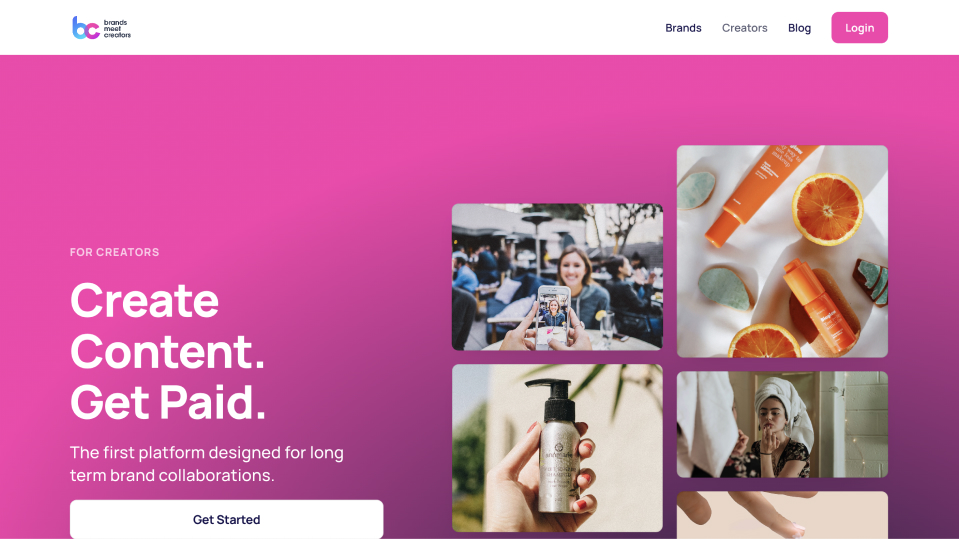
Brands Meet Creators is essentially like a job board to easily connect brands and creators. Creators can sign up to receive emails of opportunities or check out the board of available creator jobs. You can apply to jobs that interest you and brands get to sift through the applications to choose the best fit.
5. Upwork

Upwork is a creator marketplace for all sorts of creative jobs—writing, video editing, graphic design, virtual assisting, and so much more. But the platform also has plenty of UGC creator jobs to check out as well. Look through the gigs to see if any interest you and start applying.
6. Target Creator Program

Target Creator Program is an affiliate program where creators earn commission on sales they attract by creating content. The commission rates are up to 8%, and anyone is free to apply (however, not everyone will be accepted).
7. Trend
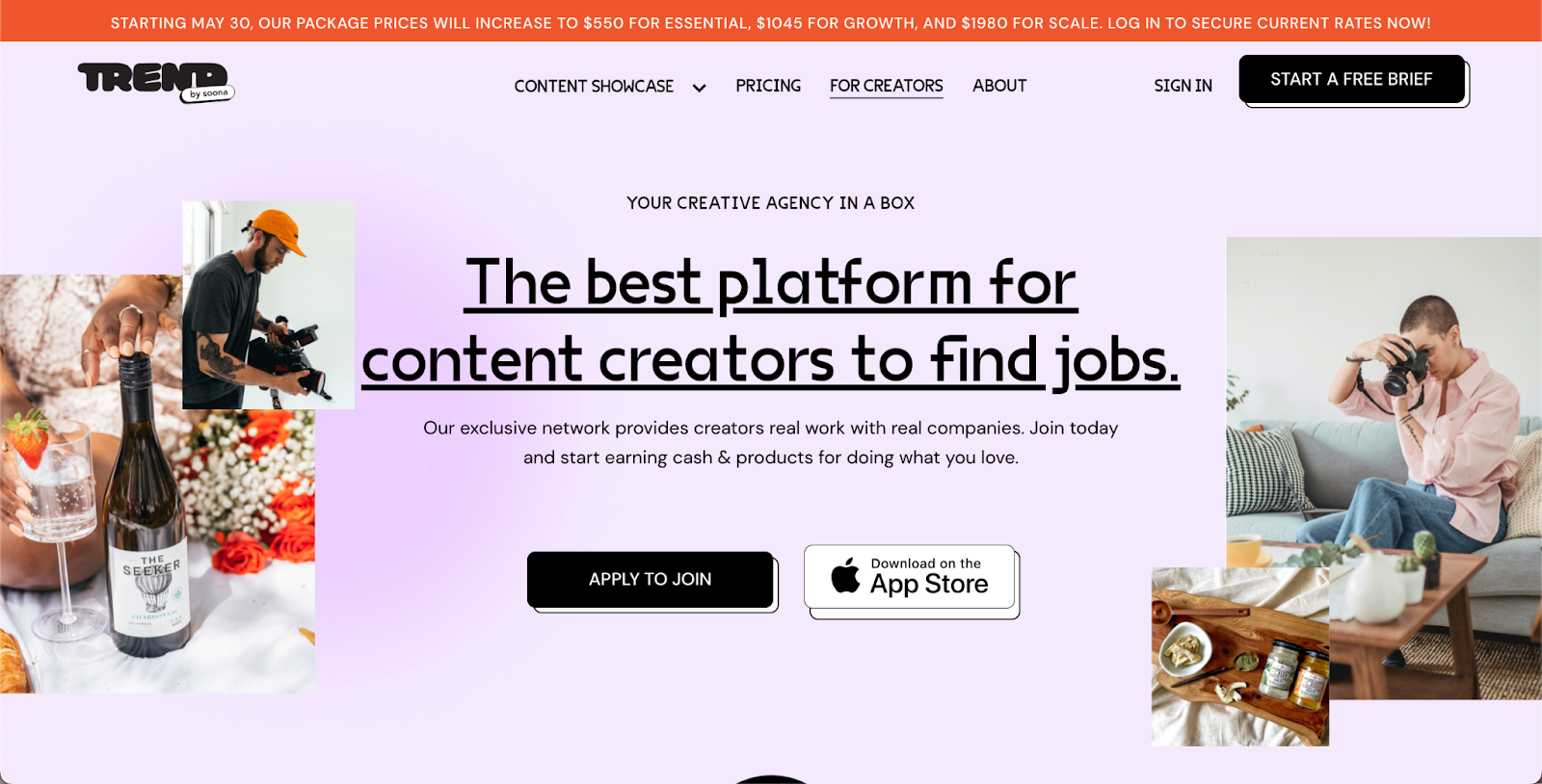
Trend is a platform that connects brands who need UGC content with creators who want to get paid for creating UGC content for brands. They have an iOS app where you can browse gigs (they add them daily), apply, and submit content. One advantage of Trend is that they provide their creators with free products and monetary payment on successful brand deals.
8. Tribe

Tribe is another great platform to find UGC gigs in one place. You need 3,000 followers to start making money. You pitch brands your creative ideas for Instagram and TikTok campaigns, which allows you to really tap into your creativity and show off your skills.
9. Influee
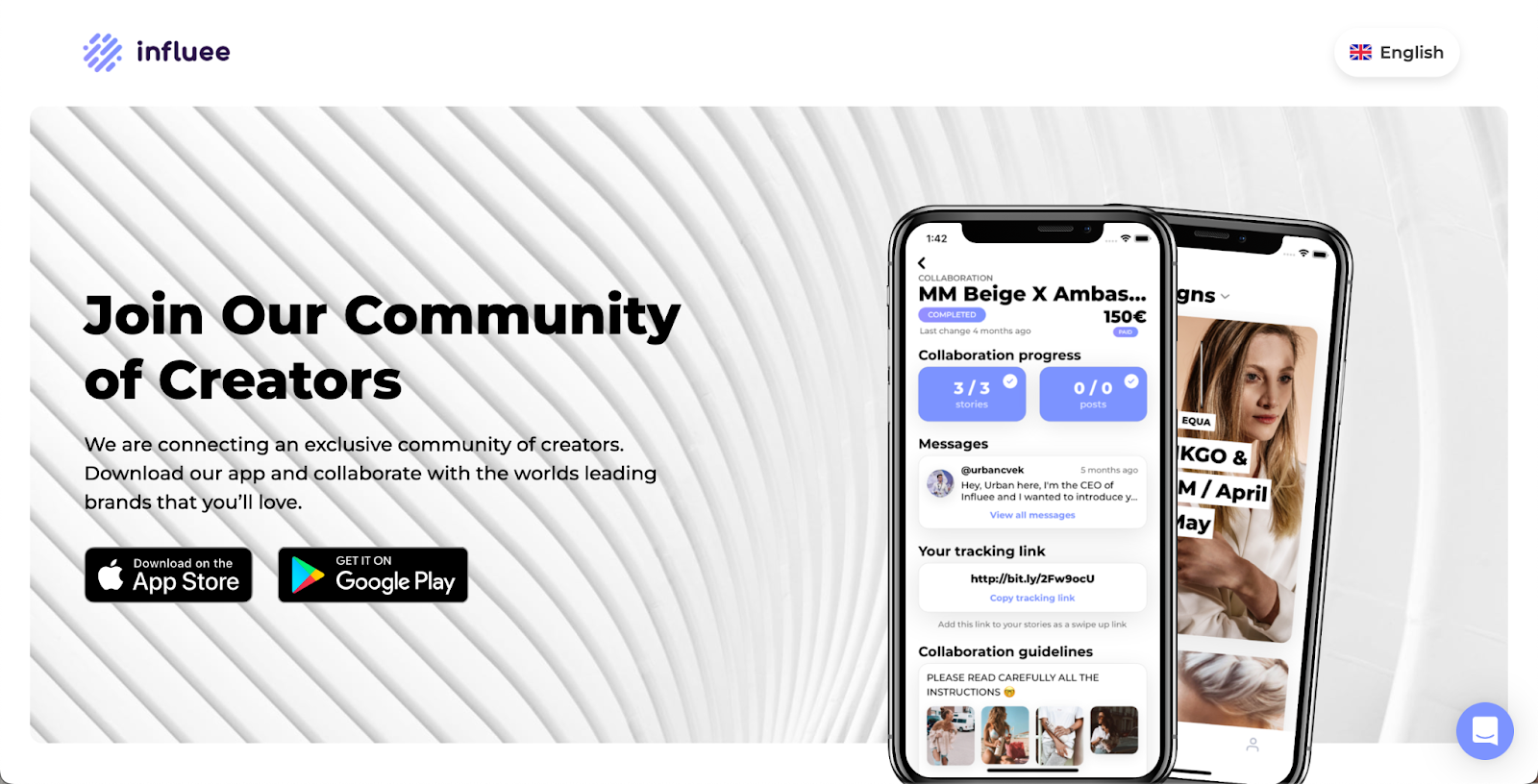
Influee is a global agency that connects brands and UGC creators. They have an app where you can browse and apply for gigs with brands, which is super easy and convenient.
10. UGC Shop
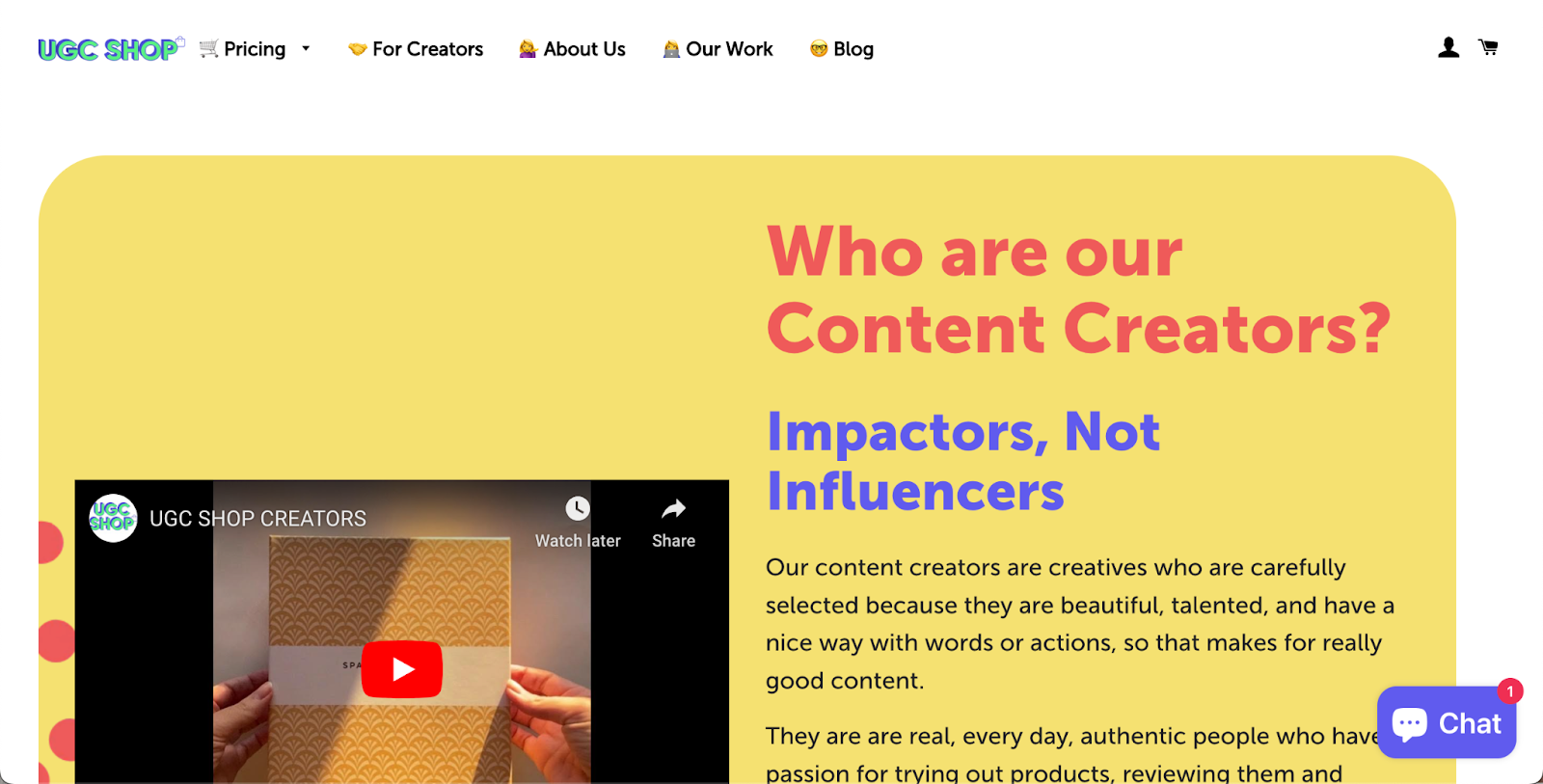
UGC Shop is a smaller global agency and online platform that works with brands and UGC creators. Anyone can apply, and you don't have to live in the United States to be eligible to start working with brands, receive free products, and get paid.
11. The Right Fit
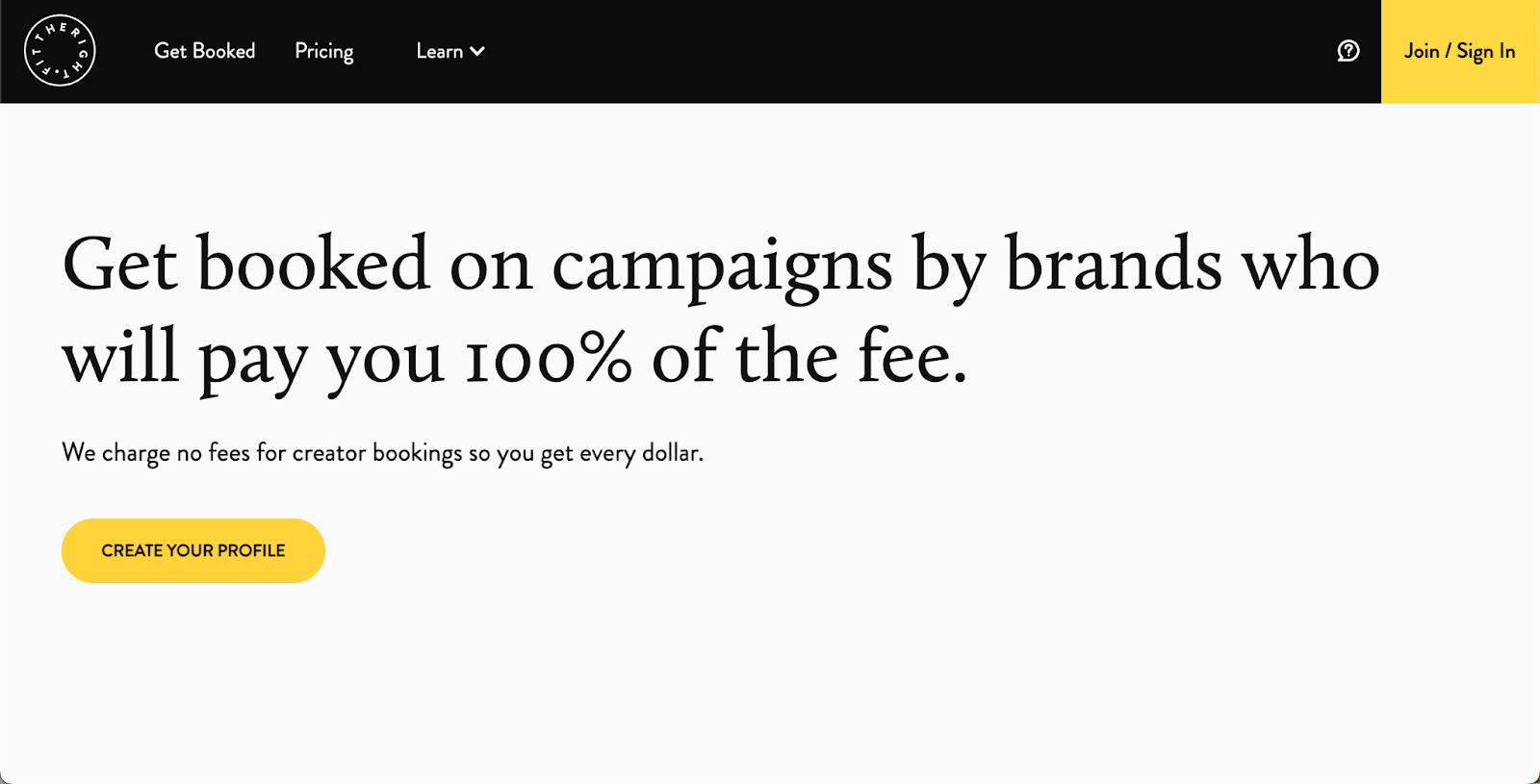
The Right Fit is a platform where you can create your creator profile, browse available brand partnerships, and then apply for jobs that fit your experience and personal brand. You can manage all the applications, collabs, and content directly on their app, which is quick and convenient.
UGC Success Cases
To give you a better idea of what being a UGC creator is like, let's look at a few successful UGC creators.
Emma Lorrae

Emma is a full time UGC content creator and strategist. She has worked with a variety of brands to help them create engaging UGC. On her website, she has portfolio that showcases the high quality videos she created, and brands she collaborated with, which include Girl Code, Waterdrop and more. She makes around $7-8k/month from UGC partnerships.
Hannah Jefferson
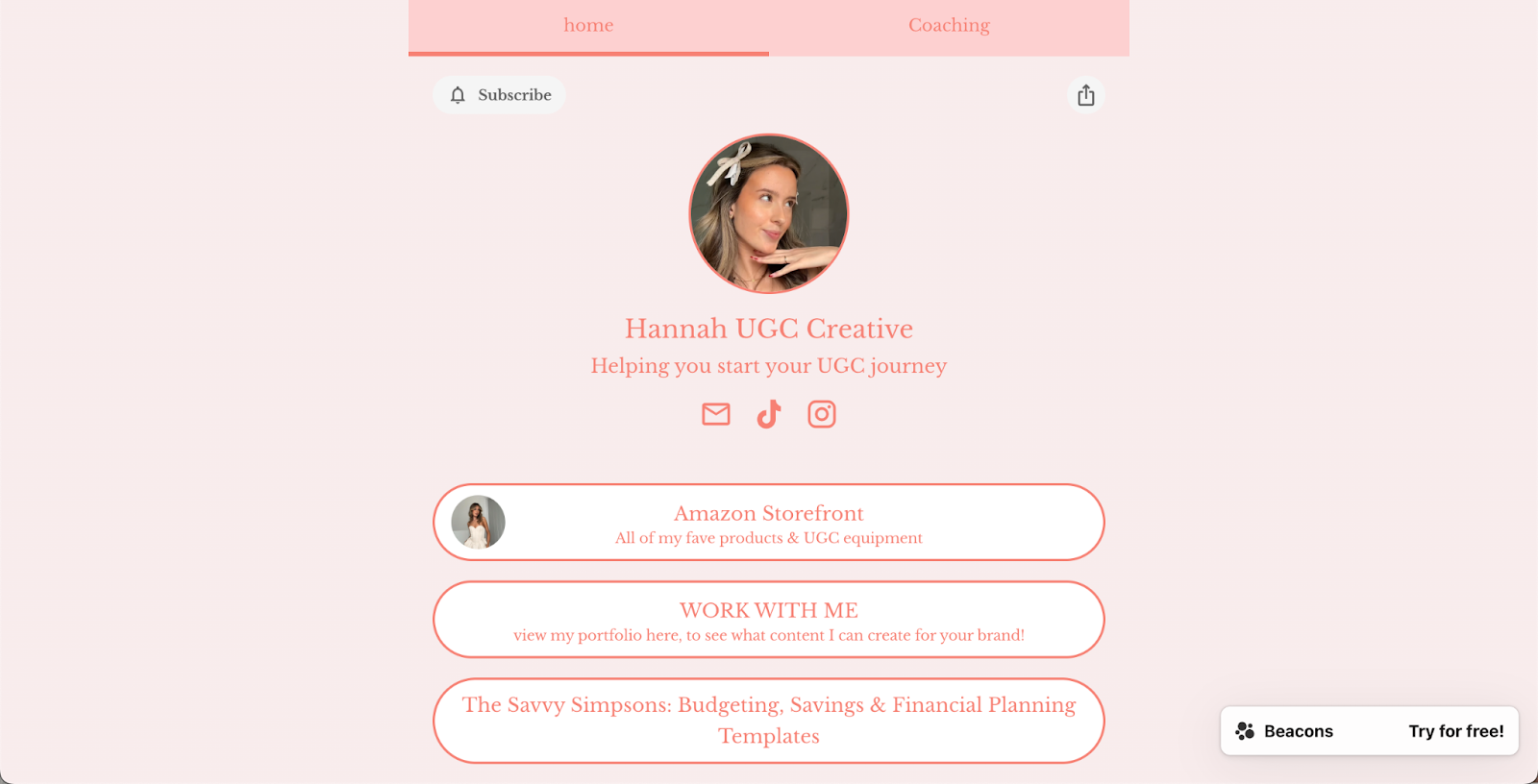
Hannah is a full-time UGC content creator and mentor from the UK. She creates beautiful aesthetic videos for her own platform and for brands. She mainly focuses on hair and beauty, wellness, jewelry, and fashion industries and has worked with brands like Motel, Wild, GHD London, and more.
Ashlee Sulens

Ashlee is a full-time UGC content creator from Australia. She creates content about hair, beauty, wellness, food, and lifestyle and has worked with brands like Wild, Esmi, Afterpay, and more. Her rates start at $150 AUD for a video, but she offers various packages for brands to choose from.
FAQs
Now, let's answer some of the most frequently asked questions people have.
Do UGC creators make money?
Yes! UGC creators can make a good part-time or even full-time income. How much UGC creators will make can vary greatly due to their niche, following, and results. If you can demonstrate to the brand that you can create content that generates engagement, you can charge much more than other creators in your niche who have the same following.
One UGC creator on TikTok shares that in 2023, she made between $7-8k each month from UGC content alone. Another UGC creator on TikTok shared that, on average, she makes around $15k per month by creating UGC content for brands. As you can see, the sky is the limit here.
How much should I charge as a UGC creator?
Your rates will depend on your experience and the size of your portfolio. Minimum rates might start out at $50 for a single piece of content and can go up to $500 or more. One UGC creator and educator on TikTok shares that if you're a beginner, your rates should be $150 for a video and $20-$30 for a photo. She also suggests offering bulk discounts to encourage brands to book content packages with you.
How do I get UGC for my online course?
The easiest way to get UGC for your online course is to tap into your past and current student network. Chances are that some of them are creating content, or would be interested in creating content. So, reach out to them and ask if they'd be interested in a collaboration.
You can incentivize your students to create UGC around your course by running giveaways, offering discounts for the UGC they share online, or running contests with prizes. Make it fun and engaging so that your students are more willing to participate.
Is user-generated content legal?
Yes. But, before using UGC, you always have to get explicit permission from the creator to use their content. This is very important for each piece of content every time you want to post a UGC. The same applies if you create UGC and the brand wants to use it--they should always request your permission.
What are the best UGC examples?
Some brands do UGC better than others. ASOS uses hashtag #AsSeenOnMe on Instagram to encourage their customers to share their OOTD (outfit of the day) on their socials wearing ASOS clothing. In 2014, on their website, they launched an As Seen On Me section where they feature outfits they choose from people who used the hashtag on Instagram.
Another brand that utilized UGC very well is Aerie. When, in 2014, they launched their campaign against retouching models' pictures, they invited their audience to share their own pictures showing off wearing Aerie clothing with all of their imperfections using hashtag #arieREAL.
Join more than 150,000 creators who use Teachable to make a real impact and earn a real income.


